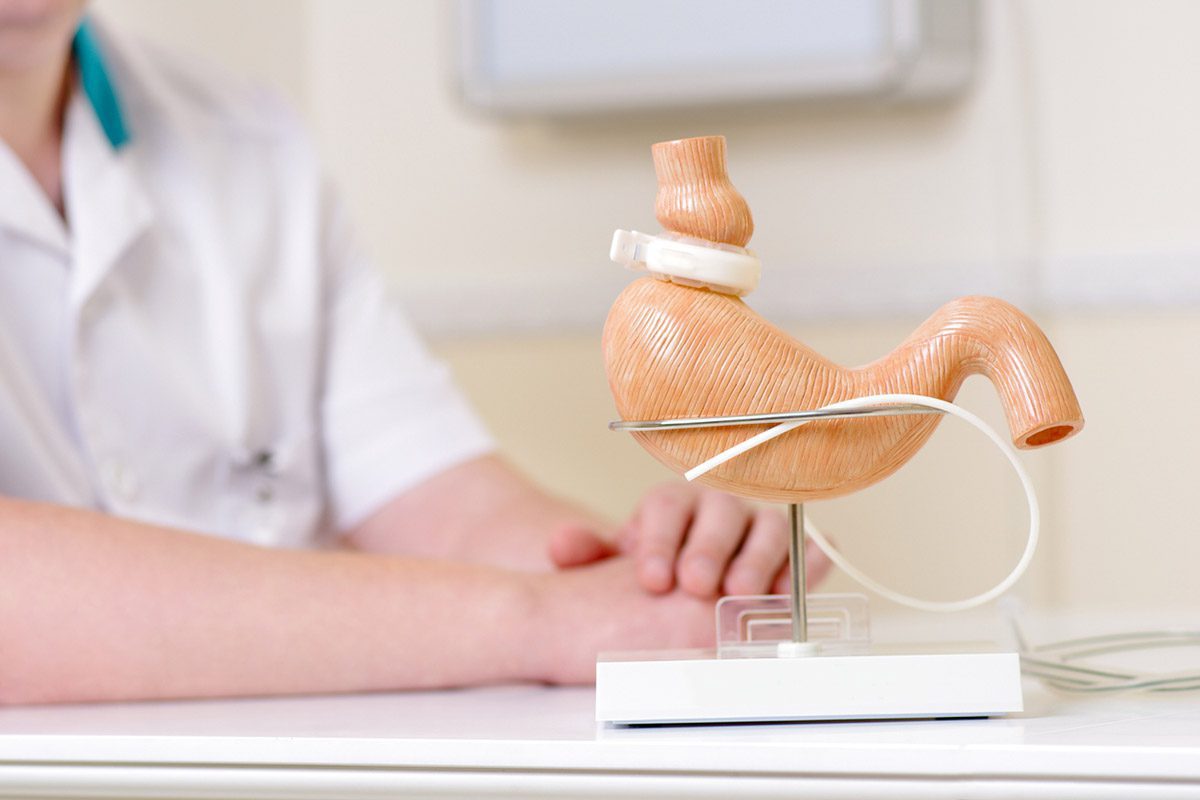Because this piece does not have an abstract, we have provided for your benefit the first 3 sentences of the full text.
To the Editor: Atomoxetine is a nonstimulant drug approved by the US Food and Drug Administration for the treatment of patients with attention-deficit/hyperactivity disorder (ADHD). Atomoxetine, a norepinephrine transport inhibitor, acts powerfully on the noradrenergic pathway, with little effect on the other neurotransmitters. Its mechanism of action in the control and maintenance of ADHD symptoms is through presynaptic inhibition of norepinephrine.
Urinary Hesitancy Associated With Atomoxetine
To the Editor: Atomoxetine is a nonstimulant drug approved by the US Food and Drug Administration for the treatment of patients with attention-deficit/hyperactivity disorder (ADHD). Atomoxetine, a norepinephrine transport inhibitor, acts powerfully on the noradrenergic pathway, with little effect on the other neurotransmitters. Its mechanism of action in the control and maintenance of ADHD symptoms is through presynaptic inhibition of norepinephrine.1 Atomoxetine is well-tolerated, and side effects are uncommon.2 Clinically significant or intolerable adverse events are unlikely. Complaints sometimes include insomnia, dry mouth, anorexia, nausea, constipation, erectile dysfunction, dysmenorrhea, decreased libido, dizziness, and urinary retention or other difficulties with micturition. Atomoxetine is metabolized by cytochrome P450 2D6 (CYP2D6) enzymes. Significant differences in the actions of atomoxetine are observed between extensive metabolism of CYP2D6 substrates and genetically weaker metabolizers. For example, the bioavailability of atomoxetine can vary between 63% and 94% depending on the individual patient’s metabolizing potential.2 Coprescribing ADHD drugs with other medications is common because of a high rate of comorbid psychopathology. Adjustment of atomoxetine dosage downward is warranted during concomitant administration of potent 2D6 inhibitors such as fluoxetine or paroxetine. Prescribing atomoxetine together with other drug-induced interactions may lead to side effects in people who are poor metabolizers. The case history of a man is presented who was prescribed fluoxetine and developed acute urinary hesitancy after the concomitant addition of atomoxetine.
Case report. A 41-year-old man with recurrent major depressive disorder and ADHD presented to a psychiatry clinic with worsening depression for over 1 year. His symptoms were sadness, lack of motivation, anhedonia, anergia, low self-esteem, poor concentration, and memory dysfunction. He also complained of inattention, making careless mistakes, forgetting instructions, and difficulty organizing tasks. The mental status examination was significant for psychomotor retardation, depressed affect, hopelessness, helplessness, worthlessness, anxiety, and poor memory. For similar symptoms 12 years ago, sertraline was prescribed and was ineffective. With psychotherapy, his mood had improved with no medication treatment. The patient was diagnosed with ADHD as a school-aged child. A methylphenidate trial had resulted in incapacitating anxiety. He has a history of alcohol abuse but reported being sober for a decade.
Fluoxetine 20 mg/d yielded improvement in his mood, self-esteem, energy, and motivation. However, he continued to express concerns about poor concentration, which negatively affected his occupation. At subsequent visits, the fluoxetine dose was increased to 40 mg/d, but that dose caused restlessness, pacing, and akathisia. Those complaints disappeared once the dose of fluoxetine was reduced to 20 mg/d. Psychometric testing revealed adult ADHD (DSM-5 criteria), thus he was administered a trial of atomoxetine. After 1 week, he urgently reported urinary symptoms of hesitancy. He said, "It is difficult to pee." A urinalysis result was negative. Discontinuation of atomoxetine quickly relieved all urinary concerns.
Atomoxetine is primarily metabolized by the CYP2D6 pathway to 4-hydroxy atomoxetine.3 Dosage adjustment may be necessary when it is administered with potent CYP2D6 inhibitors, such as paroxetine, fluoxetine, or quinidine. According to the manufacturer’s guidelines,3 in adults coadministered a strong CYP2D6 inhibitor or someone who is a poor CYP2D6 metabolizer, atomoxetine should be initiated at 40 mg/d. Atomoxetine is only increased to the usual target dose of 80 mg/d if the initial dose is well-tolerated. Approximately 7% of the white population are weak CYP2D6 metabolizers.3 Such individuals have a 10-fold higher mean blood level and a 5-fold greater peak drug concentration at a given dose of atomoxetine compared with extensive metabolizer patients. The blood levels in poor metabolizers are similar to those attained by individuals taking strong inhibitors of CYP2D6.
Research4 involving adult ADHD controlled trials documents a rate of urinary hesitation at 5.6% and urinary retention of 1.7%. Such side effects become more frequent with concomitant use of a CYP2D6 inhibitor. Urinary storage and release are regulated by a balance between sympathetic and parasympathetic influences. The parasympathetic pathway provides an excitatory input to the detrusor muscle causing contraction and leading to urinary excretion. Continence is maintained by a sympathetic mechanism that facilitates bladder filling and inhibits micturition. Urinary hesitancy or retention is caused by disruption in the sympathetic/parasympathetic balance involved in the process of urination. It can be induced by excessive activation of the sympathetic system caused by exposure to atomoxetine. This medication can lead to an increase in norepinephrine activity by inhibiting presynaptic reuptake of norepinephrine. Side effects become more frequent after concomitant use of a CYP2D6 inhibitor. There are case reports5,6 highlighting the interaction of atomoxetine with potent CYP2D6 inhibitors. In 1 vignette,5 acute urinary retention in a 16-year-old boy occurred following the coprescribing of atomoxetine and risperidone. The other case6 documented acute urinary retention in a 12-year-old boy prescribed atomoxetine. Urinary symptoms disappeared quickly after discontinuation of the drug in both cases.
References
1. Bymaster FP, Katner JS, Nelson DL, et al. Atomoxetine increases extracellular levels of norepinephrine and dopamine in prefrontal cortex of rat: a potential mechanism for efficacy in attention deficit/hyperactivity disorder. Neuropsychopharmacology. 2002;27(5):699-711. PubMed doi:10.1016/S0893-133X(02)00346-9
2. Banaschewski T, Roessner V, Dittmann RW, et al. Non-stimulant medications in the treatment of ADHD. Eur Child Adolesc Psychiatry. 2004;13(suppl 1):I102-I116. PubMed doi:10.1007/s00787-004-1010-x
3. Atomoxetine (StratteraTM) [package insert]. Indianapolis, IN: Eli Lilly and Company; 2002.
4. Whiskey E, Taylor D. A review of adverse effects, and safety of noradrenergic antidepressants. J Psychopharmacol. 2013;27(8):732-739. PubMed doi:10.1177/0269881113492027
5. Desarkar P, Sinha VK. Acute urinary retention associated with atomoxetine use. Aust N Z J Psychiatry. 2006;40(10):936. PubMed doi:10.1111/j.1440-1614.2006.01914.x
6. Sahin N, Altun H. Urinary retention associated with atomoxetine use: a case report. J Clin Anal Med. 2015;6(5):659-661.
aHennepin County Medical Center-Regions Psychiatry Training Program, Minneapolis-St Paul, Minnesota
bUniversity of Minnesota Medical School, Minneapolis-St Paul, Minnesota
cDepartment of Psychiatry, Regions Hospital, Minneapolis-St Paul, Minnesota
dDepartment of Psychiatry, University of Louisville School of Medicine, Louisville, Kentucky
Potential conflicts of interest: None.
Funding/support: None.
Patient consent: The patient provided verbal permission to publish the case, and information was de-identified to protect anonymity.
Published online: September 14, 2017.
Prim Care Companion CNS Disord 2017;19(5):17l02095
https://doi.org/10.4088/PCC.17l02095
© Copyright 2017 Physicians Postgraduate Press, Inc.
Please sign in or purchase this PDF for $40.00.





